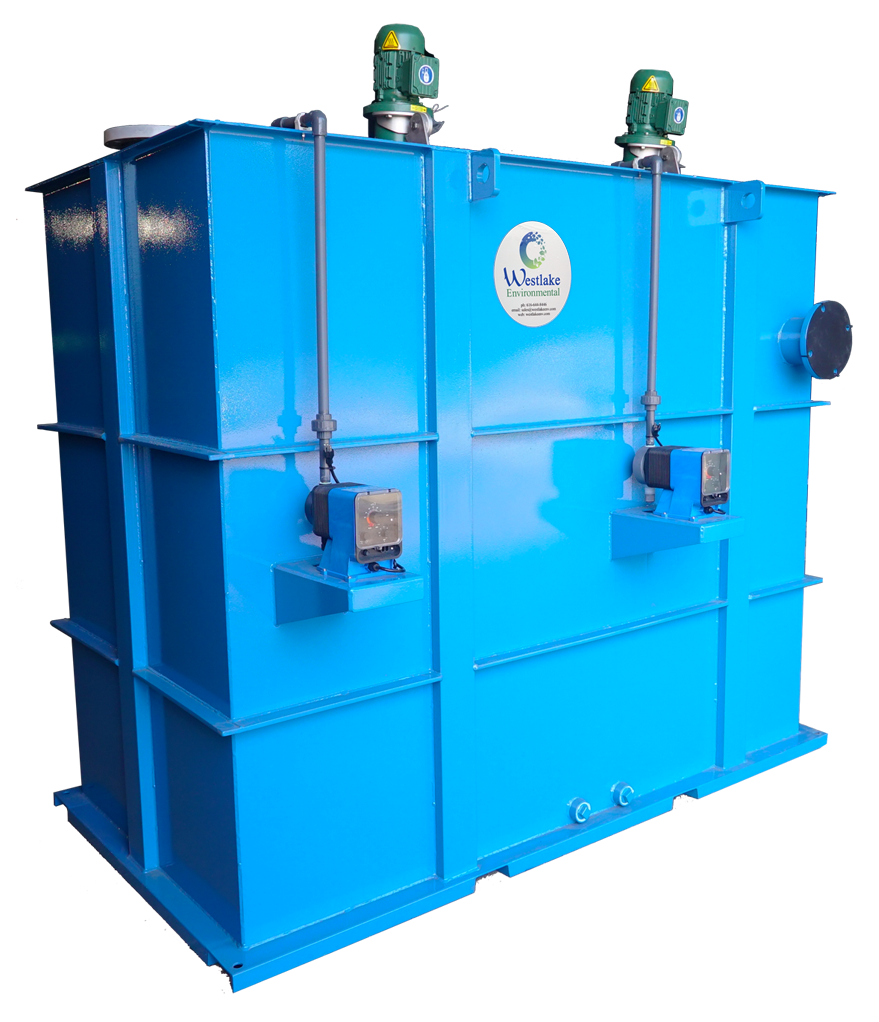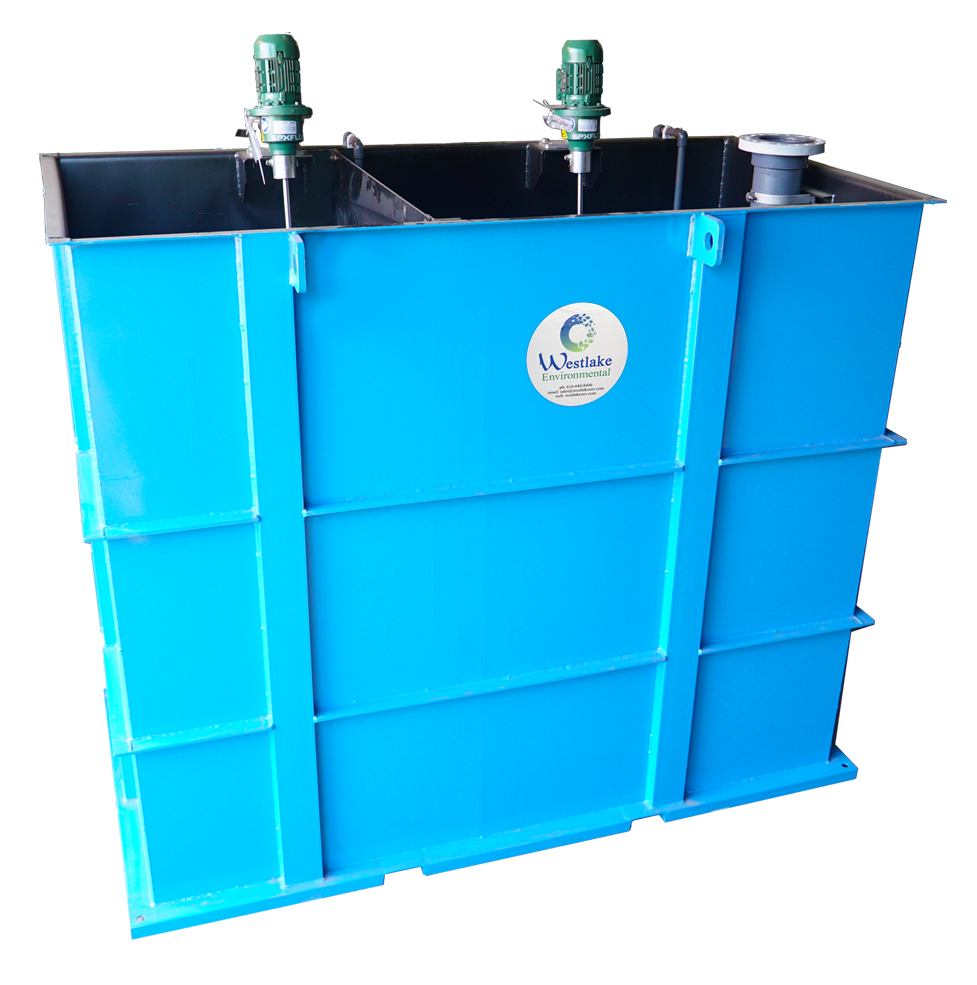GENERAL INFORMATION

The Westlake Environmental Chemical Addition Systems (CAS) are designed to address a variety of wastewater treatment applications. Whether your process is batch treatment or continuous flow, Westlake Environmental manufactures a complete line of Chemical Addition Systems to meet your requirements.
OPERATION
In all of the Chemical Addition Systems the raw water enters the tank through an inlet pipe that directs it to the bottom of the tank. In doing so the water is forced to rise through the mixing zone, which thoroughly mixes the chemical recipe, and decant over a fixed weir. Metering pumps are provided to dose chemicals into the tank and are selected based on the design flow rate and treatment requirements, and are application specific. A pH probe is often used to monitor the pH of the water and turn on/off metering pumps as needed. Systems also include a NEMA 4X control panel in 304 stainless steel material.
DESIGN
The systems are designed to provide coagulation, flocculation, pH adjustment, emulsion cracking, pH neutralization, metals precipitation and more. Systems can be provided as a single, double, triple or four chamber tanks, and typically include a mixer and chemical pump for each chamber. A pH probe is also provided when the pH of the water must be monitored and maintained. Equipment is completely assembled and tested prior to shipping, ready for installation on a concrete pad.
MATERIALS OF CONSTRUCTION
Materials of construction include A36 carbon steel, 304 and 316 stainless steel, polyethylene and fiberglass. The interior of the A36 carbon steel tanks receive multiple coats of a robust coal tar epoxy with the exterior receiving a durable polyurethane enamel.
APPLICATIONS
- Algae Removal
- Chemical Processing Plants
- Meat Packing
- Poultry Processing
- Produced Water
- Seafood Processing
- Tank Truck Cleaning
- Aircraft/Auto/Railroad
- Food Processing
- Oil Refinery Waste
- Power Plants
- Refinery
- Snack Foods
- Tanning
- Canning Plants
- Heavy Metal Removal
- Pet Foods
- Prepared Foods
- Rendering
- Storm Water Treatment
- Textile
STANDARD FEATURES
- Complete skid mounted systems
- Single, double, triple and four chamber tanks
- Compact design, small footprint
- Chemical dosing pumps
- Constant and variable speed mixers
- pH control
- NEMA 4X, 304 stainless steel control panel
- Fabricated in A36 carbon steel, 304 or 316 stainless steel
- Sequential reaction operations
- Systems are wired, plumbed and tested prior to ship, ready for installation
KEY TERMS
Coagulation: Gelling or lumping of particles, typically a colloid, to form a pin floc. In Coagulation a chemical is added that produces positive charges to neutralize the negative charges. The particles then stick together, forming larger particles that are easier to remove via settling or floating.
Flocculation: A process similar to coagulation, but differs in that it is used as a complimentary step to develop an even larger, robust particle. Flocculation is almost always used in conjunction with and preceded by coagulation. The process is generally accomplished by slow mixing to allow the particles to come into contact with one another and bind, enhancing the settling or floating process.

pH Adjustment: pH is the measure of the acidity or alkalinity of a solution. A pH of 7 is neutral; 0-7 is the acidic range and 7-14 is the alkaline range. pH adjustment is required for a variety of applications such as metal precipitation, correcting pH for polymer and coagulant use, emulsion breaking and pH adjustment prior to city discharge.
Metals Precipitation: Most common metals that are dissolved in a waste stream can be precipitated from their ionic state by raising the pH. Once the metals precipitate and form solids, they can easily be removed by the float or settling methods